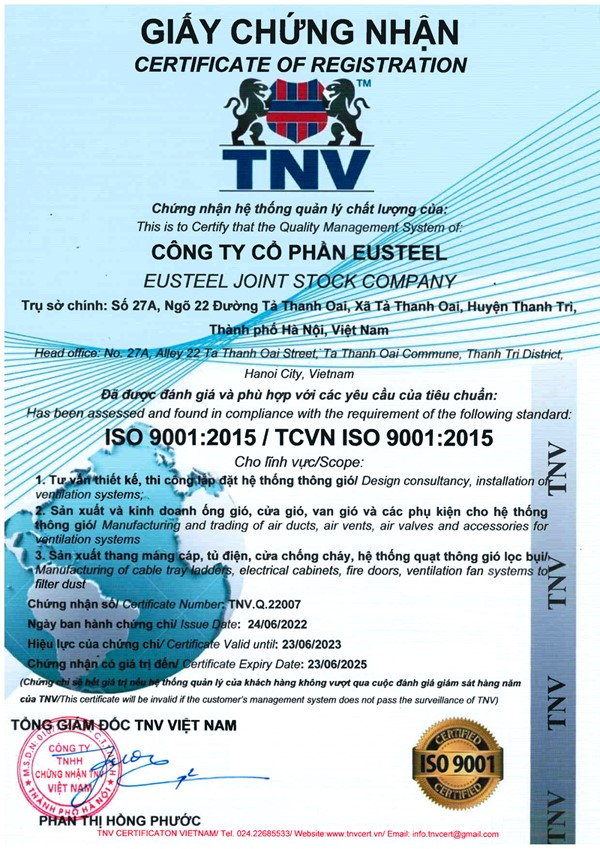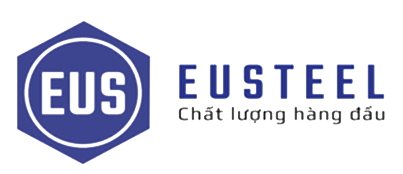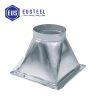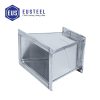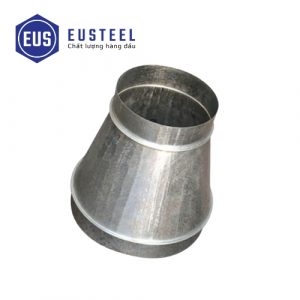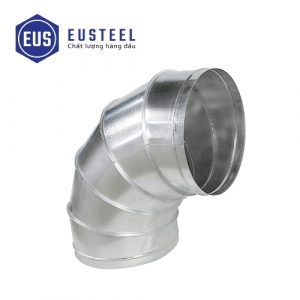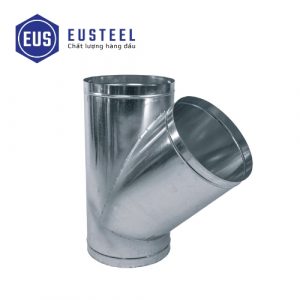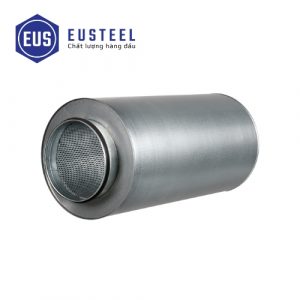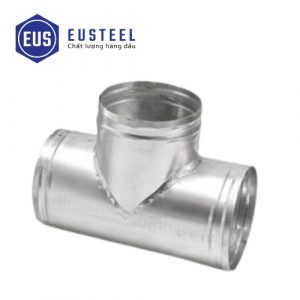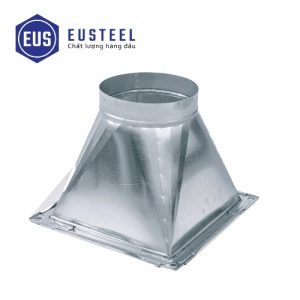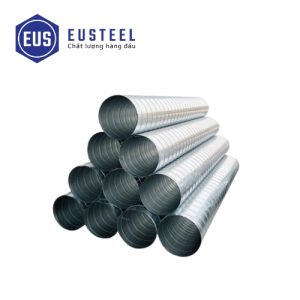Galvanized corrugated iron: Common for most ventilation and air conditioning systems.
Stainless steel (201, 304): Used for special applications requiring high corrosion resistance (for example, industrial kitchen exhaust, exhaust gas treatment systems with corrosive chemicals).
Optimize installation space:
Keep a fixed plane: When it is necessary to keep the top or bottom of the duct in line with the false ceiling or floor, the eccentric cone helps shrink the duct while still ensuring architectural and aesthetic elements.
Obstacle avoidance: Allows pipes to shrink in size and move to avoid beams, columns, water supply and drainage pipes, or other M&E systems.
Flexible connection: Connect a large piece of pipe to a smaller sized device or air vent, but their position is not coaxial.
Adjusting airflow and pressure: Similar to the concentric cone, it also helps adjust the velocity and pressure of the airflow, but has the ability to shift position.
Shape:
The two ends are rectangular (or square) with different sizes.
The main difference is the side faces: One or two side faces of the taper are typically kept straight or nearly straight, while the remaining sides will be tilted to create narrowing and offset. For example:
If you want to keep the bottom of the tube aligned with the ceiling or floor, the taper will taper toward the top and the sides will tilt in.
If you want to keep one side in line with the wall, the taper will retract toward the other side and the remaining sides will tilt in.
Material Thickness:
Similar to other duct accessories, the thickness of corrugated iron/stainless steel will depend on the size of the cone and the working pressure of the system, following technical standards.
Taper length:
The length of the eccentric receiver is also very important. The larger the length, the smaller the slope of the inclined surfaces, helping the airflow move smoother, reducing pressure loss and noise. A taper that is too short will create sudden changes, causing air flow chaos and energy loss.
Joint:
The two ends of the square eccentric cone have standard flanges (TDC/TDF flange, angle steel flange) to connect with other duct sections or equipment, ensuring tightness for the system.
